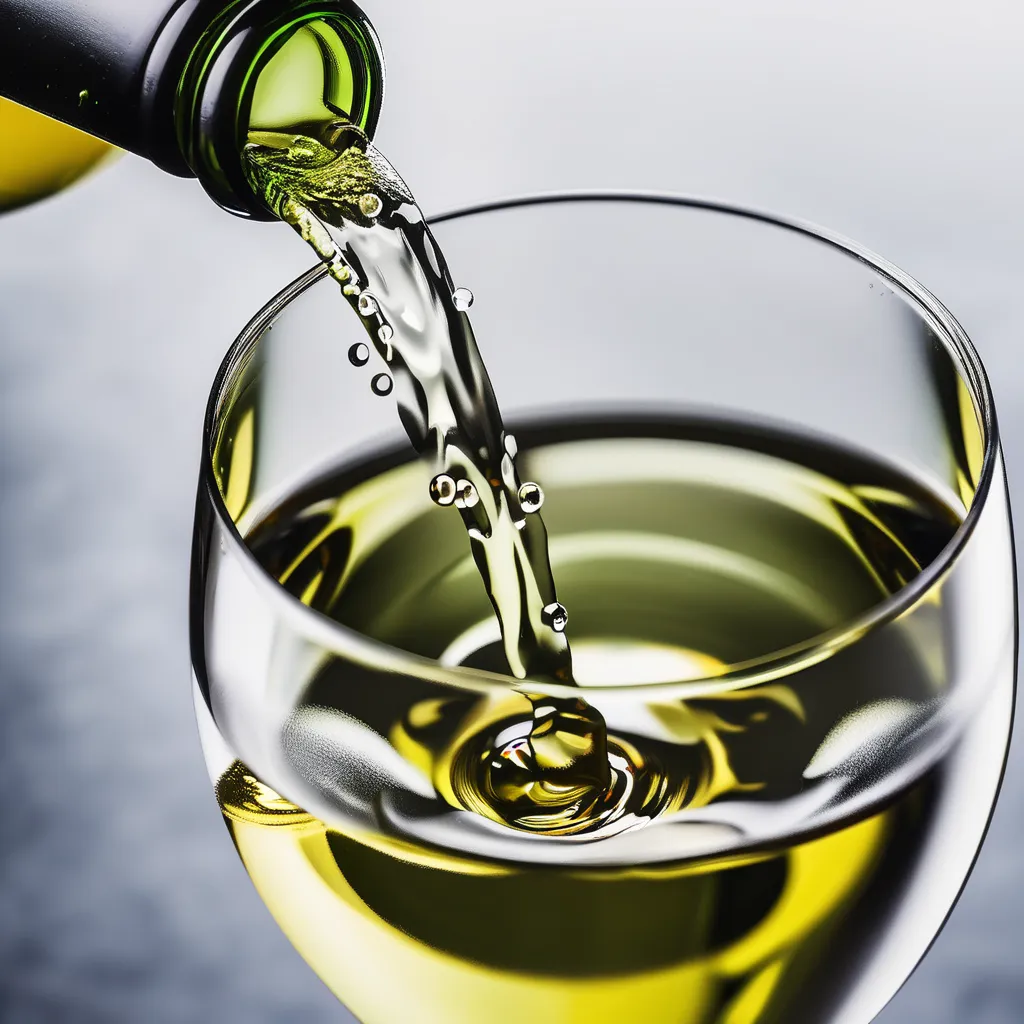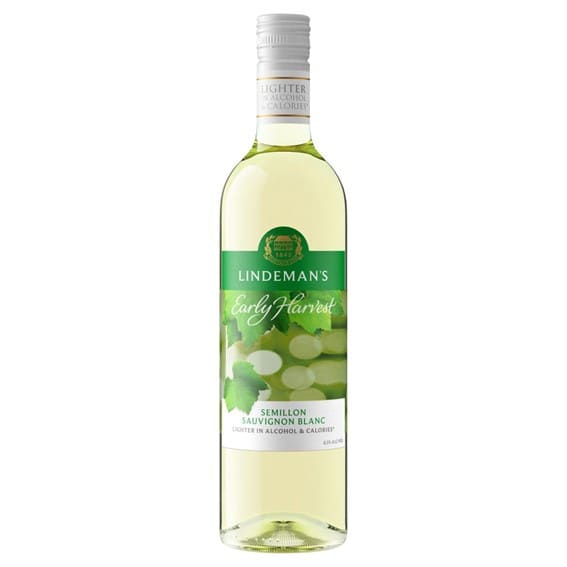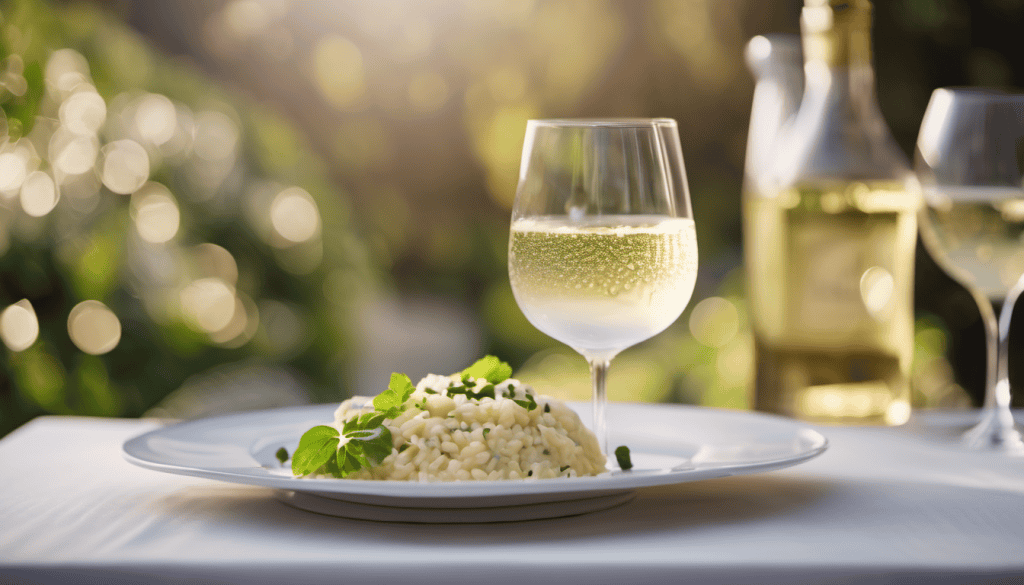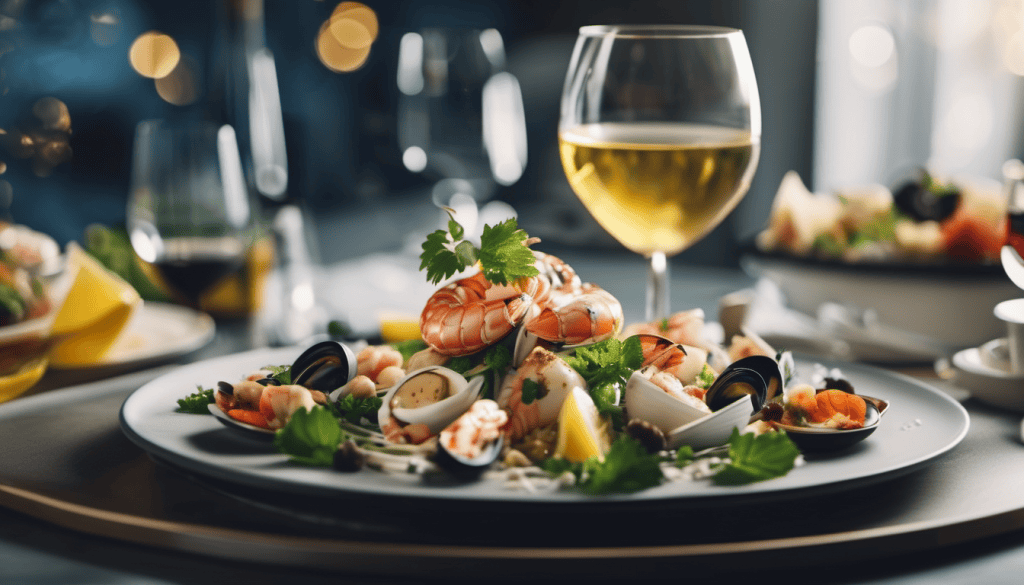Are you a wine enthusiast looking to reduce alcohol without sacrificing flavor? Or perhaps you’re health-conscious and searching for a lighter option to enjoy with meals? Low alcohol wine is becoming a popular choice among health-conscious wine lovers who want to savor their favorite beverage while maintaining a balanced lifestyle.
In this comprehensive guide, we’ll discuss everything you need to know about low alcohol wine, from its production methods to its benefits and top recommendations. Get ready to discover a world of delicious, lighter wines that will revolutionize your drinking experience!
Welcome to Didi Somm, and Cheers!
Important Notice: The information in this article is for general and public information purposes only. It solely reflects Didi Somm’s or his Staff’s opinion, and no responsibility can be assumed for errors or omissions in the service’s contents. For details, please check the Disclaimer at the bottom of the homepage.
Key Takeaways:
Low alcohol wine typically contains between 6% and 11% alcohol by volume (ABV).
Most wines globally fall within the 11.5%–13.5% ABV range, which is considered medium alcohol wines.
- By grape varieties, Riesling, Vinho Verde, French Gamay, Moscato, and others naturally produce low alcohol wines.
Various production methods are used to create low alcohol wines, including early harvest and dealcoholization techniques.
These wines offer benefits such as reduced calorie intake and lower risk of hangovers.
Low alcohol wines are available in a wide range of styles, including reds, whites, and sparkling varieties.
The market for low alcohol wine is expected to grow significantly in the coming years.
What Exactly Is Low Alcohol Wine?
Low alcohol wines typically contain less than 11-12% alcohol by volume (ABV), compared to the average wine’s 12-14% ABV. The alcohol content in wine is directly related to the sugar content of the grapes used, as yeast converts sugar into alcohol during fermentation.
Factors influencing sugar levels in grapes include climate, altitude, and grape variety. Cooler climates and higher altitudes generally result in lower sugar content and, consequently, lower alcohol potential. Some low alcohol wines are naturally lower in ABV due to these factors, while others are produced through specific winemaking processes to reduce alcohol content. These wines can range from 6.5% to 11% ABV, with some varieties going as low as 0.5% ABV for nearly alcohol-free options.
Importantly, many low alcohol wines maintain their flavor profiles despite the reduced alcohol content, offering a delightful alternative for those seeking easier-drinking options.

How Is Low Alcohol Wine Made? Understanding Residual Sugar
Winemakers employ various methods to produce low alcohol wines:
Early Harvest: Grapes are picked before they reach peak ripeness, resulting in less sugar content and, consequently, lower alcohol levels after fermentation. This method prevents all the sugar from converting to alcohol. Additionally, early harvest can result in leftover grape sugar, which adds sweetness to the wine.
Reverse Osmosis: This process involves filtering wine to separate alcohol from other components, then reintroducing some alcohol to achieve the desired level.
Spinning Cone Column: Wine is gently heated and spun to separate alcohol from other volatile compounds, allowing for precise alcohol adjustment.
Dealcoholization: Fully fermented wine undergoes a process to remove alcohol while preserving flavor compounds. Some residual sugar remains in the wine after dealcoholization, contributing to its sweetness.
The Benefits of Low Alcohol Wine
- Reduced Calorie Intake: Lower alcohol content often means fewer calories, making it an excellent choice for those watching their waistlines (Our Tip: Check the NIH’s Alcohol Calorie Calculator)
- Hangover Prevention: Less alcohol consumption can lead to reduced chances of experiencing those dreaded morning-after effects.
- Extended Drinking Sessions: You can enjoy more glasses of wine over a longer period without becoming overly intoxicated.
- Health Considerations: Lower alcohol intake may contribute to better heart health and reduced risk of certain diseases.
- Improved Hydration: With less alcohol, these wines are less dehydrating than their full-strength counterparts.
Top Low Alcohol Wine Recommendations
1. Brancott Estate Flight Series Sauvignon Blanc (9% ABV)
2. Torres Natureo De-alcoholized Muscat (0.5% ABV)
3. Leitz Eins-Zwei-Zero Riesling (0% ABV)
4. Yellow Tail Pure Bright Pinot Grigio (8.5% ABV)
5. Lindeman’s Early Harvest Semillon Sauvignon Blanc (9% ABV)

Pairing Low Alcohol Wines with Food
Just like their full-strength counterparts, low alcohol wines can be expertly paired with various dishes:
- Light white varieties: Pair with salads, seafood, and light pasta dishes.
- Low alcohol reds: Complement poultry, lean meats, and vegetarian dishes.
- Sparkling options: Excellent with appetizers, cheese plates, and desserts.


The Future of Low Alcohol Wine
As health-consciousness and moderation trends continue to rise, the low alcohol wine market is expected to grow significantly. Most European wines typically fall within the medium alcohol content range of 11.5% to 13.5% ABV. Winemakers invest in research and development to improve production techniques and expand their offerings.
This means we can expect an even wider variety of high-quality, low-alcohol wines in the future.
Tips for Enjoying Low Alcohol Wine
- Serve at the proper temperature: Follow the same guidelines as regular wines to enhance flavors.
- Use appropriate glassware: The right glass shape can amplify aromas and improve the overall experience.
- Experiment with different styles: Don’t be afraid to try various low alcohol wines to find your favorites.
- Be mindful of storage: Store these wines in cool, dark places to maintain quality.
- Educate your palate: Take time to appreciate the nuanced flavors and aromas of low alcohol wines.
Pro Tip: I recommend storing and serving low-alcohol wines like your other wines. Please check the table below and my recently published article, “The Art of Wine Storage: 30 Best Tips to Preserve Your Wines” for more details on this subject.
| WINE TYPESTORAGE TEMPERATURESERVING TEMPERATURE | ||
|---|---|---|
| Red Wine | 54°F – 64°F (12°C – 18°C) | 61°F – 68°F (16°C – 20°C) |
| White Wine | 45°F – 55°F (7°C – 13°C) | 46°F – 54°F (8°C – 12°C) |
| Rosé Wine | 45°F – 55°F (7°C – 13°C) | 46°F – 54°F (8°C – 12°C) |
Exploring Naturally Lower Alcohol Wine Regions
While low alcohol wines can be produced worldwide, certain regions have gained recognition for their expertise in crafting these lighter options:
Germany: Known for its naturally lower alcohol Rieslings and innovative dealcoholization techniques.
New Zealand: Pioneers in early harvest methods, particularly for Sauvignon Blanc.
Australia is leading the way with reduced-alcohol versions of popular varietals like Shiraz and Chardonnay. Warmer climate regions like Australia often produce medium-high-alcohol wines due to sweeter grapes.
Spain: Offering a range of low alcohol options, including traditional Txakoli from the Basque region.
California: Utilizing advanced technology to produce high-quality, low alcohol wines across various styles.
The Role of Climate Change in Low Alcohol Wine Production
Climate change is inadvertently contributing to the production of higher alcohol wines due to warmer temperatures and longer growing seasons. A Napa Valley Cabernet Sauvignon generally has an alcohol by volume of 12.5% to 14.5%, higher than low alcohol wines. This has prompted many winemakers to explore low alcohol wine production to maintain balance and tradition in their offerings.
As a result, we’re seeing increased innovation in vineyard management and winemaking techniques aimed at naturally producing lower alcohol wines.
FAQ – Low Alcohol Wine
Q 1: Does low-alcohol wine taste different?
A: While some subtle differences may be noticeable, many low-alcohol wines maintain excellent flavor profiles. Modern production techniques have significantly improved taste preservation.
Q 2: Are low-alcohol wines suitable for cooking?
A: Absolutely! They can be used in cooking just like regular wines, often with the added benefit of not overpowering delicate flavors in your dishes.
Q 3: Can I find low-alcohol versions of my favorite wine styles?
A: Yes! Many popular wine styles, including reds, whites, and even sparkling wines, are now available in low-alcohol versions.
Q 4: Are low-alcohol wines more expensive?
A: Prices can vary, but many low-alcohol wines are competitively priced with their full-strength counterparts. Some may be slightly more expensive due to the additional processing required.
Q 5: How long do low-alcohol wines last once opened?
A: Generally, they have a shorter shelf life than regular wines due to their lower alcohol content. It’s best to consume them within 3-5 days of opening.
Q 6: Can pregnant women drink low-alcohol wine?
A: It’s best to consult with a healthcare provider, as even low amounts of alcohol may pose risks during pregnancy. Non-alcoholic wines (0.0% ABV) might be a safer alternative.
Q 6: Do low-alcohol wines contain fewer sulfites?
A: Not necessarily. Sulfite levels are more related to preservation needs than alcohol content. However, some low-alcohol wines may have reduced sulfites in their overall production process.
Q 7: Are there any health benefits to drinking low-alcohol wine?
A: While moderate consumption of low-alcohol wine may offer some health benefits, such as reduced calorie intake and lower risk of alcohol-related health issues, it’s important to consult with a healthcare professional for personalized advice.
Q 8: Can low-alcohol wines be aged like regular wines?
A: Low-alcohol wines are generally best consumed young. Their lower alcohol content makes them less suitable for long-term aging than full-strength wines.
Q 9: Are there any low-alcohol sparkling wines available?
A: Yes, there are numerous low-alcohol sparkling wines on the market, including prosecco, champagne, and other sparkling varieties with reduced alcohol content.
Q 10: How do low-alcohol wines compare to non-alcoholic wines?
A: Low-alcohol wines typically contain some alcohol (usually between 0.5% and 12.5% ABV), while non-alcoholic wines have 0.0% ABV. Low-alcohol wines often retain more original wine characteristics than non-alcoholic alternatives.
Q 11: Can I mix low-alcohol wines with other beverages?
A: Absolutely! Low-alcohol wines can create lighter versions of wine-based cocktails or spritzers.
Q 12: Are there any certifications or labels to look for when buying low-alcohol wine?
A: While there’s no universal certification, many countries have specific labeling requirements for low-alcohol wines. Look for terms like “de-alcoholized,” “alcohol-reduced,” or specific ABV percentages on the label.
Q 13: How does the fermentation process differ for low-alcohol wines?
A: For some low-alcohol wines, fermentation is stopped early to retain more natural grape sugars and limit alcohol production. Others undergo full fermentation followed by alcohol reduction techniques. In contrast, fortified wines use distilled grape brandy to increase alcohol content during the fortification process.
Q 14: Can I make low-alcohol wine at home?
A: While making lower-alcohol wine at home through early harvest or blending techniques is possible, achieving precise low alcohol levels without specialized equipment can be challenging.
Q 15: What is the difference between low-alcohol wines and fortified wines?
A: Low-alcohol wines have reduced alcohol content, typically achieved through early harvest or alcohol reduction techniques. On the other hand, Fortified wines involve adding a neutral spirit, such as distilled grape brandy, to increase alcohol content. This process not only raises the alcohol by volume (ABV) but also enhances the wine’s flavor, producing a richer and fuller body. Examples of fortified wines include Port, Marsala, Madeira, and Sherry.
Conclusion:
Low alcohol wine offers a fantastic alternative for those looking to reduce their alcohol intake without giving up the pleasures of wine. With improved production methods, a wide range of options, and numerous health benefits, it’s no wonder that low alcohol wines are becoming increasingly popular.
Whether you’re a seasoned wine connoisseur or a casual drinker, exploring the world of low alcohol wines can open up new and exciting possibilities for your palate and lifestyle.
So why not raise a glass to moderation and discover the delightful world of low alcohol wines today, Cheers!
For your reference, the latest articles by Didi Somm include:
- How Much Does a Bottle of Wine Weigh? – Find Out Here
- What Does Wine Taste Like? – Find Out Here
- Expert Talk: Wine Bottle Sizes – All You Should Know
- What is a Sweet Wine? – 7 Expert Insights
- How to Use Dry White Wine for Cooking? – Your Best Guide
- How to Build a Wine Cellar: 10 Best Expert Tips
Important Notice: The information in this article is for general and public information purposes only. It solely reflects Didi Somm’s or his Staff’s opinion, and no responsibility can be assumed for errors or omissions in the service’s contents. For details, please check the Disclaimer at the bottom of the homepage.


